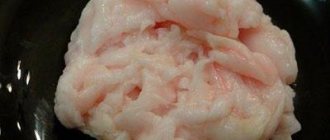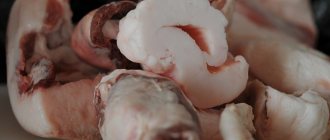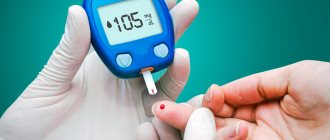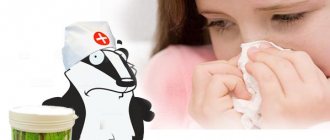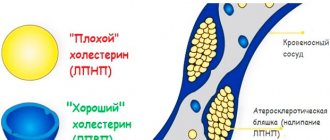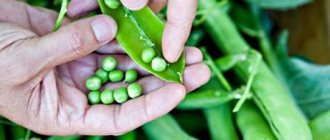It is difficult to find another such product with such a controversial reputation. Some cannot live without it, while others shudder at the mere thought of lard. For many years, pork fat was considered a junk food for the poor, but in recent years, researchers have increasingly come to the opposite conclusion. Today it is often said that lard is even healthier than olive oil in some respects. Whether this is true or just another misconception, scientists have yet to verify. But it is a fact that this product has been treated with prejudice for many years.
Who came up with the idea of eating lard?
Today, lard is considered to be the calling card of Ukrainians. But in fact, it was not they or even the Slavs who invented this product. And this is another big misconception associated with lard. Its homeland is Italy, where three thousand years ago white pork fat was used as a cheap but nutritious food for slaves who worked in marble quarries. At one time in the Roman Empire it was supplied to legionnaires during campaigns and battles.
Content:
- Who came up with the idea of eating lard?
- Beneficial properties of pork fat
- The nutritional value
- Role for the body
- Possible hazardous properties
- How to choose
- Lard: who uses it how?
- Fat in folk medicine
- Use in cosmetology
In those days, lard was called Lardo di Colonnata. The name comes from a small settlement in northern Tuscany. It was there that men, going to work in the mines, took lardo with them, in addition to bread, olives and tomatoes. Over time, lardo ceased to be a food for the poor and today has become a gastronomic attraction of the Italian Colonnata.
Even today, being in Tuscany and not trying the local lard is the same as not seeing the Eiffel Tower while in Paris. And lardo is truly a unique product: just like many centuries ago, it is kept in marble tubs, rubbed with garlic and sea salt, at a certain humidity, temperature and, most importantly, without the use of preservatives. Lardo production begins in early autumn. Interestingly, today pork fat is supplied to Colonnata from Parma, where the equally famous Parma ham is produced.
Another popular type of Italian lard is made in the northwest of the country. But unlike Collonata, lardo is not aged in marble containers, but in oak, chestnut or walnut containers.
In ancient times, this pork product was one of the most popular among the poor who could not afford meat. They came up with the idea of smoking and salting lard. Moreover, given that pigs have been raised in many countries for centuries, it is not surprising that almost every nation has its own options for preparing this product. And sometimes it is even difficult to recognize ordinary lard in pork fat prepared according to some recipes.
They say that among the products that Columbus took with him on his voyage was lard. And the sailors loved this product much more than fish. The Benedictine monks also used it. And not only as food, but also as raw material for candles.
The ancient Slavs, in addition to raw pork fat, consumed boiled and baked lard, made cracklings from it and melted lard.
Beneficial properties of pork fat
Lard is a high-calorie fatty product, and consuming a lot of fat, of course, is not very healthy. Meanwhile, moderate portions can be very beneficial.
Pork lard is rich in vitamins, micro- and macroelements; it contains components that have a general strengthening effect on the body. Few people know that pork fat contains a unique component that chemists call arachidonic acid. It is necessary for maintaining cholesterol levels, as well as the production of hormones and the formation of new cells. It also regulates the functioning of the brain, liver and adrenal glands.
By the way, as it turned out, it was not without reason that our ancestors loved to combine lard with garlic. Researchers have determined that this tandem of products is extremely useful for maintaining the health of blood vessels, heart and liver. Other beneficial properties of lard are that this product is a natural choleretic agent, and also easily removes carcinogens and toxins from the body.
Lard is one of the products containing selenium in a highly digestible form, which makes pork fat useful for pregnant women, nursing mothers, smokers, and athletes. And by eating a couple of pieces of lard before a drunken feast, you can protect yourself from rapid intoxication and a morning hangover.
Among other things, lard is useful for people with:
- arthritis;
- arthrosis;
- injuries of the musculoskeletal system;
- burns;
- frostbite;
- heel spurs;
- eczema;
- toothache.
Harmful properties - assessing the damage
The basis is lard - a storehouse of saturated fatty acids, which do not have a good reputation among doctors and nutritionists. Cardiologists were especially critical, since it was believed that lard increases the level of “bad” cholesterol, which, in turn, leads to narrowing of the coronary arteries and provokes cardiovascular diseases - myocardial infarction or stroke.
Recent scientific research puts a big question mark next to this thesis. According to experts from the Children's Research Center in Oklahoma, consuming significant amounts of saturated fatty acids does lead to increased levels of “bad” cholesterol. However, no direct relationship has been established between fats themselves and cardiovascular disease.
It is important to remember the following rule. In an adult's diet, the daily dose of calories derived from fats should not exceed 30% (including a maximum of 10% from saturated fatty acids). To maintain this balance, we should avoid excess animal fat in our menu.
This is especially true for elderly patients, those who are obese, those with high cholesterol levels, as well as for children.
The nutritional value
In everyday life, for most people, lard is a highly nutritious fatty product. And chemists say that lard is a complex of vitamins A, E, and F, selenium, zinc, arachidonic, palmitic, oleic, stearic, and linoleic acids.
Nutritional value per 100 g
| Calorie content | 810 kcal |
| Squirrels | 1.5 g |
| Fats | 90 g |
| Carbohydrates | 0 g |
| Cholesterol | 85 mg |
| Water | 5.4 mg |
| Ash | 3 g |
| Vitamin A | 30 IU |
| Vitamin E | 1.6 mg |
| Vitamin PP | 0.23 mg |
| Iodine | 6 mcg |
| Potassium | 14 mg |
| Calcium | 2 mg |
| Phosphorus | 13 mg |
| Iron | 0.2 mg |
Role for the body
Lard, like other food products, is beneficial for humans if you follow the rules.
It is generally accepted that a safe portion of pork fat for an adult is 10-20 g per day and no more than 100 g per week. This is the ideal daily norm, which will not leave extra centimeters on the body, but at the same time it is enough to get all the benefits from lard.
Weight loss
Many people give up fat for fear of gaining extra pounds. Observations have shown that pork fat can indeed cause obesity if consumed without moderation. But in case of overeating, almost all other foods will give a similar effect. And lard in adequate portions, on the contrary, breaks down harmful lipids in the human body. This hard white fat cleanses blood vessels of atherosclerotic plaques, stimulates the production of bile and regulates the process of food digestion. So, 1-2 slices of lard will only improve metabolism and prevent the accumulation of excess.
Heart and blood vessels
Pork fat, in addition to important antioxidant vitamins for humans, contains arachidonic acid. It is this substance, in combination with other beneficial components, that helps strengthen blood vessels and normalize the functioning of the heart muscle. Due to its special composition, lard also benefits the blood vessels that supply blood to brain cells and other internal organs. And if you remember about the ability to protect against the accumulation of excess cholesterol, then lard turns into one of the most useful products for blood vessels.
Is it healthier than olive oil?
British researchers spent 20 years studying the properties of pork fat. And not so long ago they made an amazing claim: this product is sometimes healthier than olive oil. In particular, when heated, pork fat produces substances that improve brain function and prevent heart disease and cancer. On the contrary, according to the British, vegetable oils, including olive oil, acquire properties harmful to humans when heated. So English scientists advise putting a piece of lard in a frying pan instead of vegetable oil.
Pork fat - benefits and harms, rules for preparing the mass
Even in those days when the pig was not yet domesticated, people actively used raw materials obtained from wild boars - its wild ancestors. Everything was used in cooking and farming, including lard. Today, the popularity of this specific ingredient has not diminished. It is still used in various areas of life. True, experts are increasingly saying that this product is not the most harmless and, if possible, it is better to replace it with something less dangerous.
Harm and danger of pork fat
When preparing or using pork fat, we must not forget that the pig is not the cleanest animal. It devours everything and can be a carrier of diseases characteristic of humans and a breeding ground for parasites. Studies have shown that it is not only the meat of individuals that is dangerous; no less dangerous substances accumulate in the fat.
The chemical composition and physical properties of pork fat have shown that it is quite difficult for the human body to utilize it. When it enters the human body, reactions are triggered that can lead to the development of chronic hunger. To process the substance, the body begins to actively break down glucose, which was intended to feed the brain. It turns out that the more an ingredient enters the body, the stronger a person’s hunger.
Parts of a pork carcass are often contaminated with mycotoxins - this is the result of the activity of fungi and their decay. Substances act on the body as carcinogens and mutagens, they suppress the immune system and cause cell destruction. The poison ochratoxin is particularly dangerous. After the slaughter of an animal, it accumulates in adipose tissue, blood and internal organs.
Tip: Some housewives, when purchasing raw pork fat that will be rendered into rendered fat, taste the mass. It's better not to take that much risk. Even a high-quality homemade product in a very limited volume can cause the development of a number of serious conditions.
The specific set of components for which pork fat is famous also gives the mass a number of not very positive properties. Because of this, the product is contraindicated in the following conditions:
- Recent serious illness or surgery.
- Having problems with the liver and gall bladder.
- Individual intolerance to the composition.
- Obesity, tendency to rapid weight gain.
In general, doctors and even supporters of traditional medicine recommend taking pork fat orally only when absolutely necessary. If there is an opportunity to use a less dubious analogue, it should be taken advantage of. But external use of the mass can give quite good therapeutic results. But even in this case, it is better to first consult with a specialist.
Composition of pork fat and its beneficial properties
Despite all its obvious dangers, pork fat has a number of beneficial properties, which attracts the attention of supporters of traditional medicine. First of all, it is worth noting the low content of bad cholesterol in the product. Another advantage of the product is the presence of fatty acids, which are very beneficial for the brain and digestive organs. In addition, the mass of animal origin contains a lot of vitamins A, D, E and K. For this reason, pork fat can be used as a means to combat vitamin deficiency.
In general, pork fat contains many more essential elements than other solid fats, such as butter. And its biological activity is 5 times higher than that of beef fat. It is also noteworthy that when heated, the nutrient mass does not lose its properties, which cannot be said about other animal fats.
Only fresh and properly prepared composition has therapeutic properties. When frozen, it will be white, without precipitation or streaks. Melted pork fat becomes transparent and liquid, the presence of an amber tint is allowed. If a sharp and unpleasant odor appears, it is better to throw the mass away. Its further use may be dangerous for the body.
External and internal use of pork fat
The benefits and harms of pork fat largely depend on the correct application of the composition and its timely use. Most often, the healing mass shows its best side with the following approaches:
- Treatment of joint pain. Before going to bed, lubricate the joint with fat, wrap it in compress paper and a warm scarf. We wash off the mixture only in the morning.
- Restoring joint mobility after injury. For 100 g of pork fat, take a tablespoon of salt and mix well. We apply the product to the sore joint and make a warming bandage.
- Restoring skin after a burn. Take 0.5 liters of the main ingredient and melt it until dark. Fry one chopped onion in the mixture and cool. Add 5 crushed aspirin tablets to the resulting mixture. The resulting product should be lubricated on the burn surface, not allowing it to dry out (about once an hour).
- Treatment of weeping eczema. For 2 tablespoons of interior pork fat, take 2 chicken proteins, 1 liter of celandine juice and 100 g of nightshade. Mix all this until smooth and leave for 2-3 days in the refrigerator. Lubricate problem areas with the resulting composition.
- Cough compress. You just need to moisten a gauze pad in melted pork fat (not very hot) and apply it to your back. Cover it with a warm towel and blanket.
- Rubs for colds. The warm melted mixture can be lubricated on the chest, back and feet. This approach is prohibited at elevated temperatures.
Pork fat is used internally extremely rarely. Here are some options for using this composition:
- Tea for obsessive night cough. Add a little boiled milk, a piece of pork fat and a pinch of hot pepper to green tea. We drink before bed.
- General strengthening decoction. Season the rose hip decoction with honey and fat. We drink three times a day.
- Dry cough mixture. Bring the milk to a hot state, melt a piece of fat in it. Cool the mass to 50ºС, add a little honey. We drink 3 times a day.
Women should also take advantage of the cosmetic properties of rendered lard. The product can be an excellent base for masks. It nourishes the skin well without blocking tissue respiration or slowing down metabolic processes.
Rules for cooking pork fat
Today, pork fat can be purchased in ready-made form, but it is better to prepare it yourself. Here are a few rules that, if followed, will allow you to obtain the most useful and safe composition:
- The lard should be white, clean, without streaks, stains or smell. It's good if it comes with skin. This part should also smell nice and not have any defects.
- A product that is suitable for making ghee must be soft. You need to try to stick a toothpick into it. If the stick fits in easily, this is an indicator of the high quality and freshness of the workpiece.
- The thickness of the fat should be medium; layers of gray-red meat are welcome. They are an indicator of the animal’s proper diet.
- Fat obtained from wild boar has even higher biological activity. If possible, it is better to purchase it.
- Before heating, the lard must be washed, dried and cut into pieces.
- After this, it is enough to place it in a suitable container, put it on the fire and heat until completely dissolved. Cool the finished product and put it in the refrigerator.
Pork fat is a natural product, but its quality largely depends on the conditions under which the animal is kept. If possible, you should limit yourself to external use of the healing mass. This approach allows you to obtain the desired therapeutic effects without risk to health.
polzateevo.ru
Possible hazardous properties
Pork lard is a healthy product, but only if consumed in reasonable quantities. Excessive consumption of it can cause obesity.
Rendered lard, or lard, contains a lot of cholesterol. Therefore, people with heart or vascular problems should use it in small portions or avoid the product altogether. Nutritionists also recommend avoiding lard if you have digestive disorders.
Smoked lard, especially with the help of so-called liquid smoke, also does not have much benefit, nutritionists say. In this form, the pork product becomes extremely difficult for even a healthy body to digest. And for people with kidney dysfunction or stomach ulcers, smoked fat is strictly prohibited. Salted lard is also not recommended for hearts, since in this form the product contains too much sodium, and, as is known, it has little benefit for patients. Lard is prohibited for exacerbations of gallbladder or liver diseases, as well as for disorders of cholesterol metabolism.
Another danger of lard is the presence of substances that are toxic to humans. This can happen if the animal was fed food contaminated with carcinogens or using genetically modified plants.
Speaking about the possible dangers of lard, it is important to remember again about arachidonic acid, which is quite abundant in this product. The named acid is useful for humans only in adequate quantities. Its excess causes inflammatory processes in the body, slows down blood clotting and leads to nervous disorders.
And of course, it is important not to forget: lard is not the main food source of vitamins and minerals. It can be introduced into the diet from time to time, but not made into daily food. And then you won’t have to worry about possible harmful consequences.
How to choose
It turns out that not all lard is equally healthy. Researchers have calculated that the greatest benefit to the body comes from pork fat, which is found approximately 2.5 cm under the skin. The most delicious lard with the right consistency can be found in pigs fed on acorns. Very soft and loose is a sign that the pig was overfed with corn, and very hard fat will indicate that the animal was often malnourished.
If you want to buy a piece of salted pork product, then it is important to understand: after long-term storage, there is practically nothing useful left in it. Freshly frozen lard will bring more benefit. But if you have the opportunity to buy fresh, you should always give preference to it.
Cooking process
There are several ways to prepare lard at home. You can render fat on the stove, in a steam bath, in the oven, or using a slow cooker.
Lard on the stove
It is necessary to begin the process of preparing lard by thoroughly cleaning the lard from contaminants and removing any remaining meat and blood. To achieve the best result, lard should be soaked in cold water for 12 hours. In this case, you need to use salted water, which is changed several times during soaking. Next, you need to allow the water to drain.
After such preliminary preparation, the lard should either be cut into small pieces, or passed through a meat grinder using a large grill.
It is necessary to heat lard in a pan with thick walls or cast iron. To melt 2-3 kg of lard, you will need a 6-liter container.
Water is poured into the pan so that it covers the bottom by 1-2 mm. This will avoid problems at the initial stage of preparation: the product will not burn. Next, lard is placed in the pan, and it is closed with a lid until the water boils.
After the boiling process has begun, the lid is opened and the lard begins to melt. In this case, the fire should be low, and the product itself must be stirred constantly. In this way, not only will the water gradually boil down, but it will also be possible to avoid the lard sticking to the bottom of the container in which it is cooked. The fact is that lard closer to the skin is rich in an element such as collagen, which promotes burning during the cooking process.
After the rendering process is completed, the cracklings are removed from the product. However, it is worth noting that they will not be as attractive as when they are usually prepared, since in this case the lard was soaked.
As a result of cooking, transparent fat is obtained; it should not contain turbidity. Transparency indicates that all excess moisture has evaporated completely, which means that the lard itself is ready.
Lard: who uses it how?
Lard and lard are different. This is what those who know that different countries have their own “most delicious” recipes for cooking will say. Thus, it is difficult to imagine the Ukrainian version of pork fat without the “company” of garlic or onions. There is no real Hungarian lard without red pepper. And Estonians love smoked products. But, probably, the strangest lard is found among the inhabitants of Chukotka: they consume seal fat, which, however, is very similar to a pork product.
Nutritionists call garlic, onions, red hot peppers, whole grain bread, parsley and sauerkraut the best “companions” for lard. In this combination, pork fat affects the body as an antioxidant, cleanses the liver and blood vessels, and removes excess bile.
Fat in folk medicine
Pork fat was used as a medicine back in Rus'. Some of the ancient recipes have survived to this day. Here are some of the most popular.
For toothache – apply a slice of unsalted lard to the gum near the sore tooth for 20 minutes.
For heel spurs - apply a piece of white fat to the sore spot and secure with a bandage.
For joint pain, apply a paste of ground lard and honey to sore areas at night (wrap with a warm cloth).
For warts - apply a mixture of melted lard (2 parts) and garlic (1 part) to the wart several times a day.
For varicose veins, wrap unsalted slices on painful areas.
For eczema - lubricate with a mixture of lard (2 tbsp), chicken proteins (2 pcs.), nightshade (100 g) and celandine juice (1 l). Before use, the product is infused for 3 days.
For calluses and corns, apply gruel from lard to steamed skin, then rub with pumice.
For back pain, wrap a piece of salted lard and wrap it in a warm scarf.
Treatment with pork fat
- If your joints hurt badly, you need to lubricate them with pork fat before going to bed, wrap the sore spot with a thick bandage and wrap it with a scarf on top. Remove the compress only in the morning.
- After an injury, there are cases when the joints lose their former properties and move poorly, you need to mix a tablespoon of salt and half a glass of fat. Rub the resulting mass into the affected joint, and then let the leg warm up. This can be a special bandage or a tight bandage.
- If a burn occurs due to carelessness, melt half a liter of pork fat and fry the onion until it turns black. Everyone cools down a little. Then 5 tablets of ordinary acetylsalicylic acid, which is always in the medicine cabinet, are ground into powder and mixed with onions and fat. Popularly this acid is simply called aspirin. When everything is ready, you need to be patient - you will have to smear the burn site often, and not forgetting. There is no need to apply a bandage on top. Aspirin has an antipyretic and bactericidal effect, and fat prevents the appearance of a burn mark. If you constantly apply this ointment to a burn, you should wait two weeks and the skin will be renewed, not a trace will remain of the scars. You just need to endure a little inconvenience - you need to smear the burn once an hour. If the ointment remains and is no longer needed, it is left in a cool place.
- If you suffer from weeping eczema, this mixture will help, which includes two tablespoons of pig fat, 2 pcs. chicken proteins, 100 gr. nightshade and a liter of celandine water. The fresh mixture, after mixing well, is infused for two or three days, and then applied where needed.
Pork fat is widely used not only in cooking, but also in folk medicine. Its versatile, nutrient-rich composition tends to coat internal organs, optimizing physiological processes. The fat is used both internally and externally - ointments, lotions, rubs and other medicines are made from it.
Ointment is the most convenient consistency for external use. It is usually prepared from pork fat and milk, taking into account some features:
- To make medicine, pork fat must be turned into lard, or lard (melt in a microwave oven or on a gas stove). Manipulation will lead to oxidation, during which the product will not lose its healing properties and will become suitable for any type of use;
- Add 50 g of lard to 0.5 liters of boiled milk and mix thoroughly;
- The mixture is left in a cool place until it cools completely and acquires the consistency of an ointment.
For joint pain
To treat joints and other problems of the musculoskeletal system, it is useful to add a tablespoon of red pepper to the base. This composition, due to its benefits, helps to increase blood flow and promotes rapid recovery. The ointment is rubbed in before going to bed, covered with a bandage to preserve heat.
To treat skin diseases, medicinal herbs, such as calendula, are added to the ointment. The plant is pre-dried or a pharmaceutical mixture is used, since recently cut flowers release moisture that forms condensation. This useful remedy with the addition of calendula helps with:
- cuts;
- scars;
- peeling;
- frostbite;
- cracked heels;
- weathering.
Ointment for burns
Pork lard is also useful for treating burns, as it promotes the regeneration of the dermal integument. It is important to understand that the benefits of universal lard ointment do not make it a first aid remedy. Its properties are relevant exclusively at the stage of wound healing. If you smear a fresh, open wound, you can cause irreparable harm, since living microorganisms can provoke purulent inflammation.
For coughs and colds
A universal ointment without additives is used in folk medicine and for coughs, rubbed into the chest area. The “mesh” of lard retains heat, increases blood flow and promotes the removal of phlegm. In addition, this recipe for pork fat for cough is suitable for children of any age.
The product fights cough not only from the outside, but also from the inside. The fact is that visceral fat got its name because it is found inside the animal. It surrounds organs, protecting them from temperature and mechanical damage. The mechanism of action on the respiratory tract is that the product softens spasms, turning a dry cough into a wet one.
To alleviate the symptoms of the disease, a drink is prepared from milk, pork fat and honey. To do this you need:
- milk – 200 g;
- honey – 1 teaspoon;
- Lard – 10 g.
Preparation and use: mix the ingredients and heat until boiling. The hot drink is consumed on an empty stomach. Therapy is carried out until the disease syndromes completely disappear.
For medicinal purposes, unsalted high-quality rendered pork fat - lard - is used. They turn to proven recipes, taking into account the recommendations reflected in them.
With external use of lard, a significant improvement in the condition is observed. Traditional medicine mainly uses several effective methods.
Rubbing
If you need to eliminate a severe, debilitating cough that occurs with bronchitis, add a teaspoon of medical alcohol to a tablespoon of pork fat. Additionally, add fir oil - 5 drops, mix. Rub your back and chest. They cover themselves with a warm blanket and go to bed to get a good sweat.
Compress
Lard helps in removing warts. The garlic should be peeled and crushed. Combine it with pork fat, maintaining a 1:2 ratio. Place it on a piece of gauze and fix it on the treated area. Replace the compress twice a day until the formations completely disappear.
Based on high-quality lard, homemade ointments are prepared that effectively help with various skin problems:
- To relieve redness and reduce pain after a burn, finely chop a medium onion. Fry it in 0.5 kg of interior fat. Pour into an enamel mug. Add aspirin to the oily mixture that has cooled to a warm state, after grinding 5 tablets. Hang it out carefully. Use the ointment three to four times a day. Thanks to aspirin, pain subsides, inflammation is relieved, and the possible development of infection is prevented. Lard promotes faster regeneration of new cells.
- To relieve irritation, redness and inflammation of the skin, first combine coltsfoot with chamomile and calendula in equal parts. A tablespoon of crushed collection is boiled over low heat for five minutes in 175 ml of water. Leave for 40 minutes and filter. Combine a 1:4 decoction with melted fat. Apply every 6 hours, applying a thin layer to the affected area.
- Prepare the ointment according to one more recipe. The herbal collection, similar to the previous method, is turned into powder using a coffee grinder. Sift using a sieve. Take a tablespoon of raw material and pour it into an enamel saucepan. Pour in three times the volume of lard and heat the mixture in a water bath for 30 minutes. The finished ointment is placed in a small sterile jar and used as needed to eliminate foci of inflammation.
